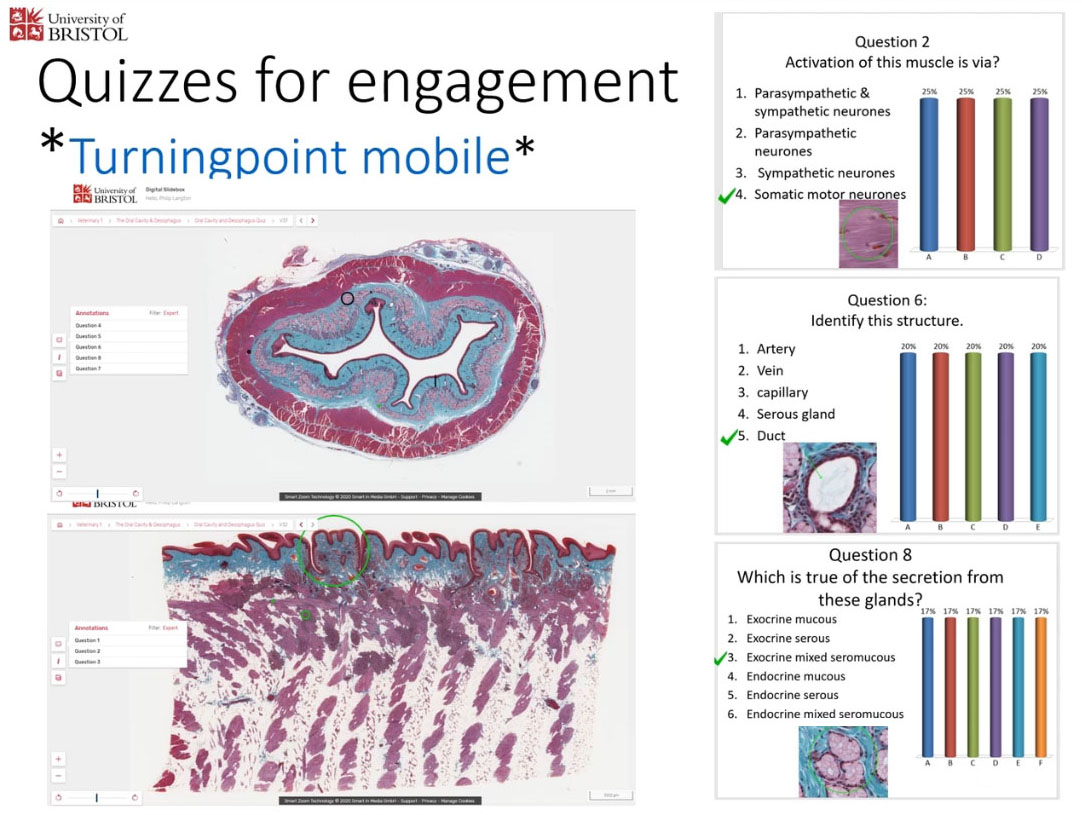Teaching Histology at Bristol University
How Working With SmartZoom® Benefits the University and Its Students
Like many other medical schools (at least those that still teach undergraduate histology), the University of Bristol has a large histology laboratory used by medical, dental, and veterinary students. It houses 125 microscopes and an equal number of slide sets, each containing around 300–400 specimens. Traditionally, teaching histology was a major logistical challenge. All students had to be present in the same room, examining slides from the same tissue block, with four to five demonstrators needed to support a full class.
Over the years, Bristol has explored various ways to make histology teaching more efficient and accessible. In 2006, the university introduced virtual microscopy technology. When concerns arose about the long-term support from their original supplier, Bristol began searching for an alternative in 2017. This led, two years later, to a partnership with the German company Smart In Media and the adoption of their SmartZoom® platform.
Online Access at All Times
SmartZoom® enables teaching staff to design tasks using a growing digital slide library, which currently includes around 600 specimens. Initially, students used SmartZoom® in the teaching lab following a brief plenary session, then continued with self-directed study supported by peer discussion and demonstrators. Since the Covid pandemic, students have been able to complete assigned tasks online at any time.
The system allows instructors to create exercises and provide feedback on students’ annotations and reports. At Bristol, staff use online quizzes to monitor learning progress and collect feedback. Planned developments include an examination module designed to anonymize student identities during assessments.
Using the quizzes available in SmartZoom® ClassRoom, students can test their knowledge themselves at any time
INTERVIEW PARTNER
Dr Phil Langton
Senior Teaching Fellow in Physiology
University of Bristol
Faculty of Biomedical Sciences
100% Preferred Virtual Microscopy
Today, both students and staff use face-to-face sessions for deeper, more value-added discussion. According to teaching staff, SmartZoom® has improved students’ understanding of histology compared with traditional methods. In feedback from 136 second-year medical students, 100% expressed a preference for virtual microscopy over conventional microscopes.
The change has also simplified teaching: staff no longer need to spend time showing students how to operate microscopes, and it is far easier to discuss the details of specific specimens. The 125 ageing microscopes no longer need to be replaced, and as teaching and research space becomes increasingly valuable, the histology lab can be repurposed for other uses.
Students are Engaged
Dr. Phil Langton, Senior Lecturer in Physiology and responsible for teaching histology, summarized the impact:
“When we adopted an online virtual microscope system, I found it became far easier to engage students with the key learning goals — namely, understanding how histological structures relate to physiological function.”







